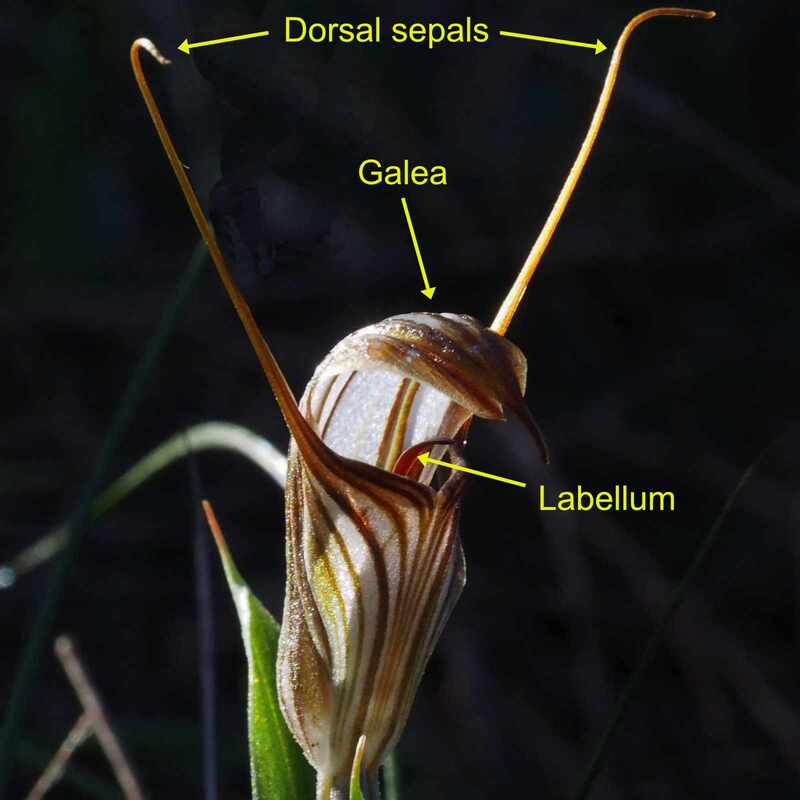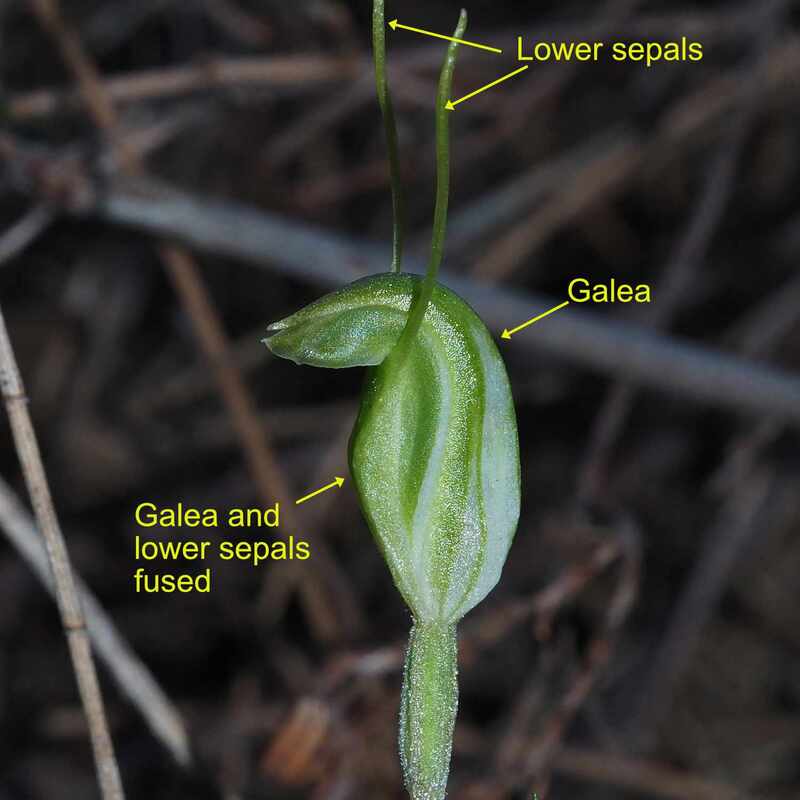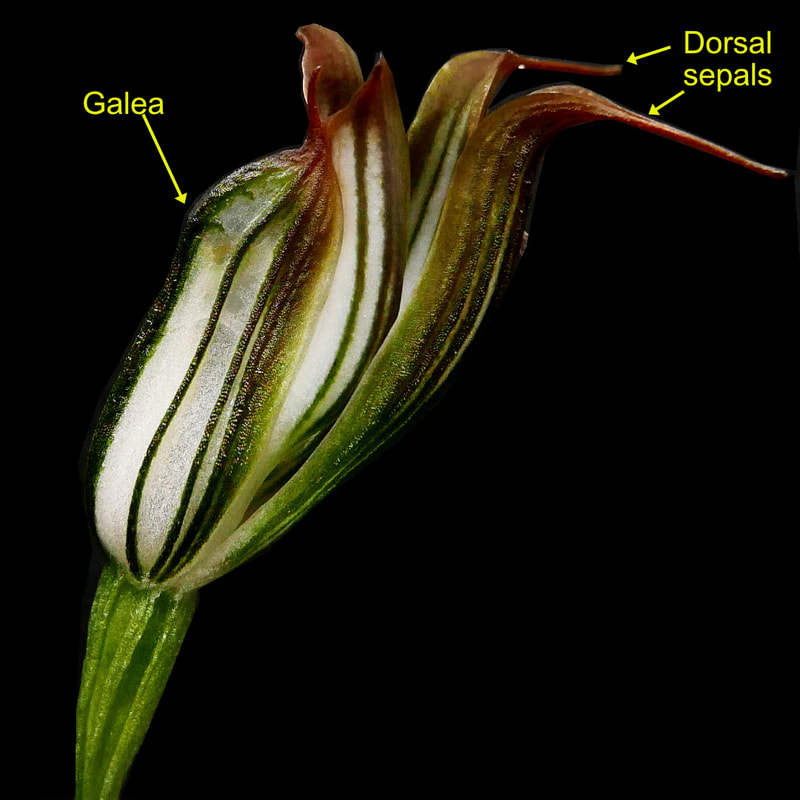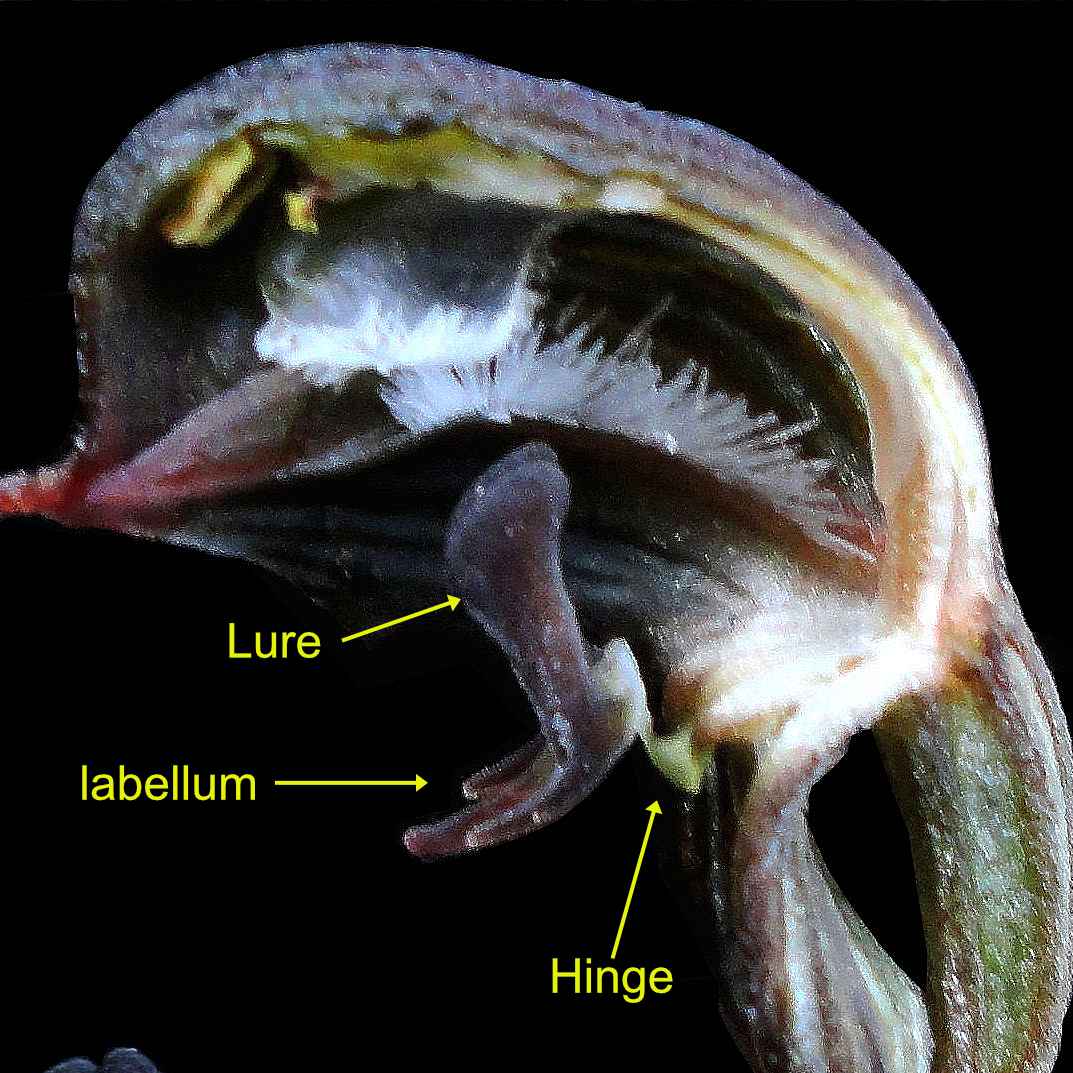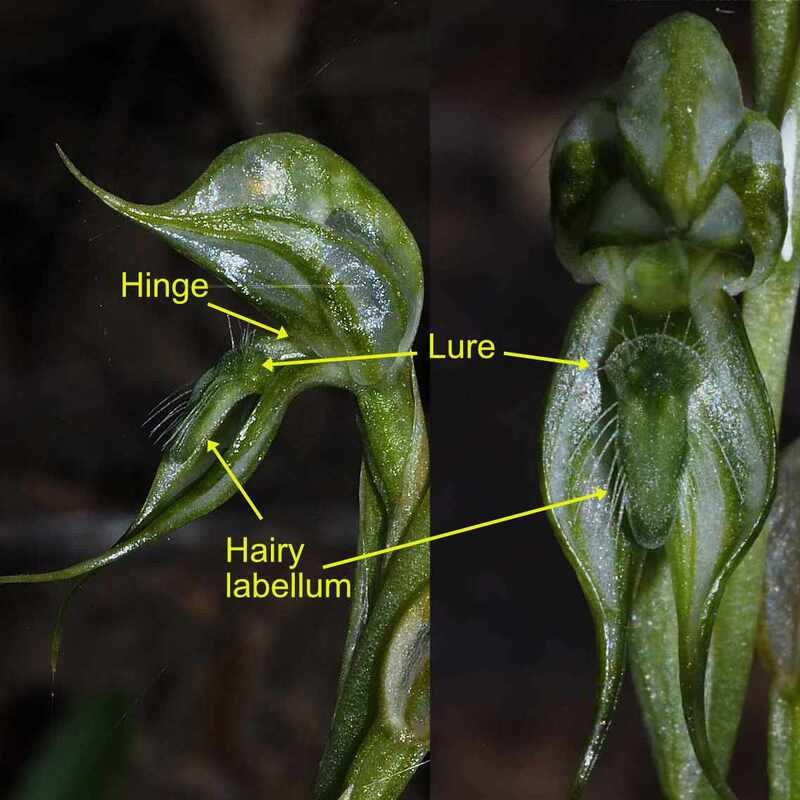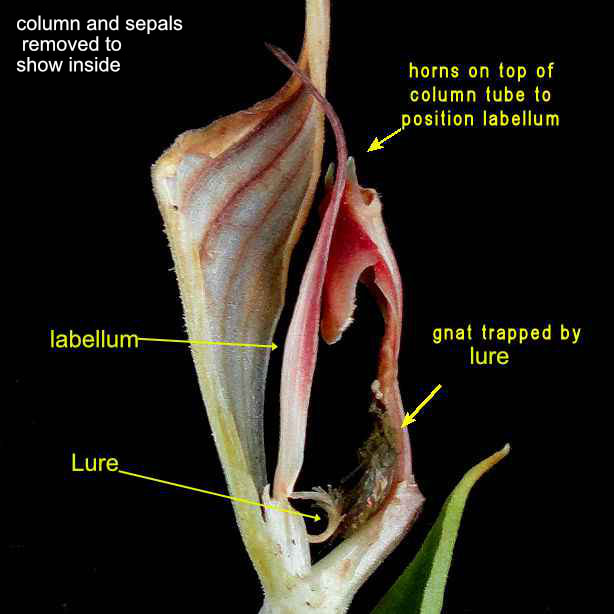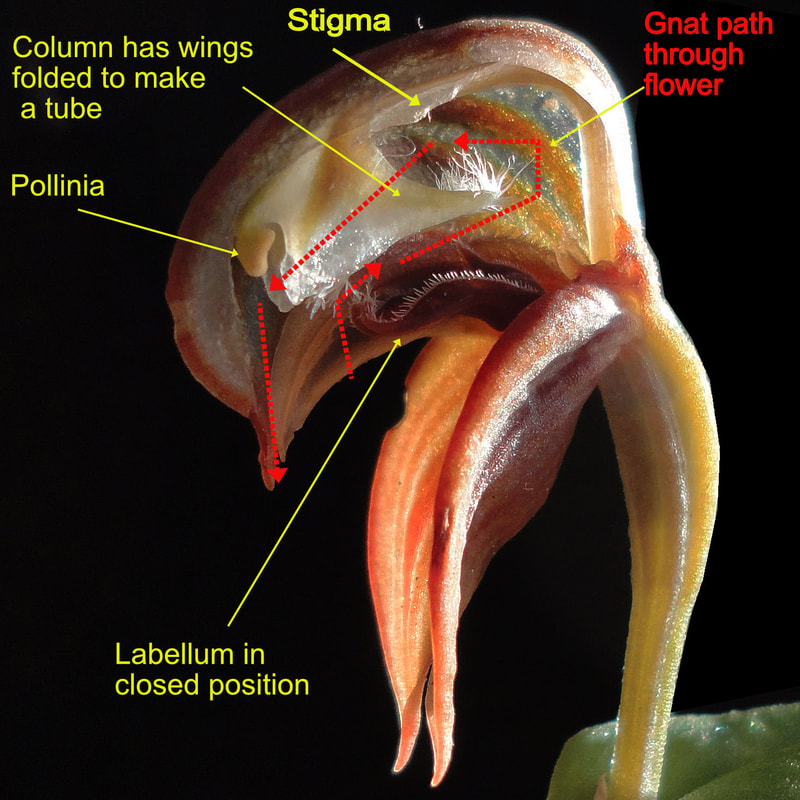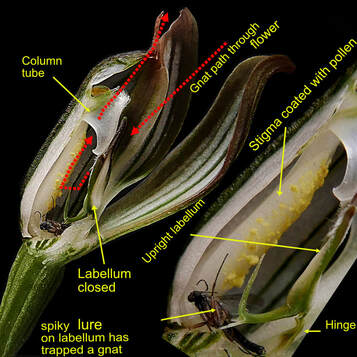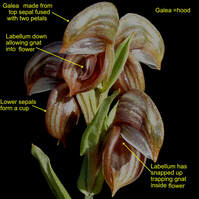 Horizontal galea Pterostylis concava
Horizontal galea Pterostylis concava Greenhood orchids (Pterostylis species) look plain but their flowers are little marvels of nature, which trap insect pollinators (mainly Mycetophilidae and Sciaridae families, commonly known a fungus-gnats and dark-winged fungus-gnats respectively). The hood called a "galea" consists of the dorsal sepal fused with two lateral petals. The galea curves forward to form a light-filled chamber containing the column. The column, which contains the sexual parts of the flower (stigma and pollinia) has wings which fold around to form a tube.
The lower sepals are partially joined make a landing platform on which, the lower highly modified petal, the labellum closes the trap when gnat passes over it.
- Horizontal galea with a short labellum:- dark banded greenhood orchid P. sanguinea, frog greenhood orchid P. sargentii, cupped greenhood orchid P. concava, and painted rufous greenhood orchid P. picta.
- Semi- vertical galea with long labellum:- jug orchid P. recurva, red-veined shell greenhood orchid P. hamiltonii, hairy stemmed snail greenhood orchid P setulosa, bird orchid P. barbata.
The labellum is a miracle of evolution: a petal which has changed into a tiny trapdoor with an attachment on its base called a lure, and a hinge attachment. The lure is a counter-weight and pheromone emitter. I noticed that jug and shell orchid lures had pinned and killed unfortunate gnats that triggered them.
If the labellum shuts and the flower is not pollinated, it reopens in ten to thirty minutes.
| |
